Five Self-Defense Techniques for Common Street Attacks
In today’s unpredictable world, feeling secure while out and about is more important than ever. Whether you're walking to your car late at night or just taking a stroll in your neighborhood, knowing how to defend yourself can make all the difference. This article dives into five effective self-defense techniques that are not only practical but also easy to learn and apply in real-life situations. By the end, you’ll feel more empowered and confident, ready to tackle any potential threat that may come your way.
To kick things off, let's talk about situational awareness. Imagine you're walking in a crowded area, and your mind is wandering. Suddenly, you feel a chill down your spine. Why? Because you weren’t paying attention! Being aware of your surroundings is like having a sixth sense; it allows you to detect potential threats before they escalate. It’s essential to keep your head up, make eye contact with those around you, and be mindful of anything that seems out of place. Remember, it’s not just about seeing; it’s about interpreting what you see. By honing your situational awareness, you can avoid dangerous situations before they even arise.
Now, let’s move on to something that might surprise you: de-escalation techniques. Not every confrontation needs to end in a physical altercation. Sometimes, the best defense is to diffuse a situation with your words and body language. Think of it as trying to calm a storm before it wreaks havoc. By using a calm tone and open body posture, you can often pacify an aggressor and avoid an attack altogether. Here are some verbal strategies you can employ:
- Stay calm and speak softly.
- Use "I" statements to express your feelings.
- Ask questions to engage the aggressor in conversation.
These techniques can be incredibly effective in tense situations, allowing you to walk away unharmed.
Understanding how to recognize aggressive behavior is crucial. Early detection can provide you with a critical advantage. Look for signs such as:
- Clenched fists or a tense posture.
- Intense eye contact or glaring.
- Rapid breathing or pacing.
By identifying these indicators, you can react swiftly and appropriately to potential threats, giving you the upper hand.
Body language is a powerful communicator. It can tell you a lot about a person’s intent. For instance, if someone is invading your personal space or their body is angled towards you with tension, these can be red flags. Stay vigilant and prepared by observing these cues. It’s like being a detective, piecing together clues to figure out what might happen next.
Have you ever noticed how someone’s voice can change when they’re angry? The way someone speaks can reveal their emotional state. Pay attention to vocal tone and volume; a raised voice or aggressive tone can signal that trouble is brewing. By interpreting these vocal cues, you can enhance your ability to respond effectively, whether that means walking away or preparing to defend yourself.
Sometimes, despite our best efforts, a confrontation is unavoidable. This is where mastering basic defensive techniques comes in handy. Knowing a few simple moves can empower you to escape or defend yourself during an attack. Techniques such as:
- Targeting vulnerable areas like the eyes, nose, or groin.
- Using your body weight to push an attacker away.
- Creating distance to make it harder for them to reach you.
These fundamental moves can make a significant difference in a critical moment, giving you a fighting chance.
Believe it or not, everyday items can serve as effective self-defense tools. You might be surprised at how many common objects you can use to protect yourself. For instance, your keys or a pen can become powerful allies in a crisis. With a little creativity, you can transform ordinary items into self-defense weapons.
Keys and pens are accessible tools that can be used for self-defense. When holding your keys, make sure to grip them between your fingers, allowing them to protrude for maximum impact. Similarly, a pen can be used to jab at an attacker, targeting sensitive areas. Remember, the goal is to create an opportunity to escape rather than to engage in a fight.
Another effective self-defense tool is a personal alarm or whistle. These devices can attract attention and deter attackers. When activated, they emit a loud sound that can startle an aggressor and alert those nearby. Carrying one of these devices can significantly enhance your safety in public spaces, providing an extra layer of protection.
Q: What should I do if I feel threatened?
A: Trust your instincts. If you feel unsafe, try to remove yourself from the situation as quickly as possible. Seek help from nearby individuals or call the authorities if necessary.
Q: Are self-defense classes worth it?
A: Absolutely! Self-defense classes not only teach you practical techniques but also boost your confidence and situational awareness.
Q: Can I use everyday items for self-defense?
A: Yes! Items like keys, pens, and even your phone can be effective tools for self-defense when used correctly.

Understanding Situational Awareness
Situational awareness is your first line of defense in staying safe in potentially dangerous environments. It’s about being aware of your surroundings and understanding the dynamics at play. Imagine walking through a busy street; you’re not just strolling along, you’re actively scanning the area, noticing who’s around you and what they’re doing. This heightened sense of awareness can help you identify potential threats before they escalate into dangerous situations.
Being situationally aware means recognizing the elements in your environment that could pose a risk. For instance, if you see someone acting suspiciously or if a group is gathering in a way that feels off, your instincts should kick in. But how do you develop this awareness? It’s not just about looking around; it requires a blend of observation, intuition, and experience. Here are a few tips to enhance your situational awareness:
- Stay Alert: Avoid distractions like your phone or loud music. Keep your head up and your eyes scanning your surroundings.
- Trust Your Gut: If something feels wrong, it probably is. Your intuition is a powerful tool.
- Know the Environment: Familiarize yourself with the places you frequent. Knowing the exits, lighting conditions, and potential hiding spots can be crucial.
Moreover, situational awareness is not just about being on the lookout for trouble; it also involves understanding the context of your environment. For example, during a festival, the atmosphere is generally celebratory, but that doesn’t mean you should let your guard down completely. Keeping a balance between enjoying the moment and staying aware of your surroundings can significantly enhance your safety. This mental preparation can be likened to a chess game, where every move counts, and being one step ahead can make all the difference.
In essence, developing situational awareness is like building a muscle; the more you practice, the stronger it gets. By consistently engaging in this mental exercise, you’ll find yourself naturally more alert, better equipped to spot potential dangers, and ultimately, more confident in your ability to navigate through life’s unpredictable scenarios.

The Importance of De-escalation Techniques
When it comes to personal safety, the first line of defense is often not a physical confrontation but rather the ability to de-escalate a situation. Imagine walking down the street and suddenly finding yourself in a tense encounter with an aggressive individual. Your heart races, and instinct might tell you to prepare for a fight. However, what if you could diffuse that tension with your words and body language instead? De-escalation techniques are essential tools that can help you navigate potentially dangerous scenarios without resorting to violence. They allow you to maintain control, reduce the likelihood of an attack, and ultimately keep yourself safe.
At the core of de-escalation is the understanding that not every confrontation needs to end in aggression. Many conflicts arise from misunderstandings, heightened emotions, or simple miscommunication. By employing verbal strategies and non-verbal cues, you can often turn a hostile situation around. For instance, using a calm and steady voice can help to lower the temperature of the exchange. A simple “I don’t want any trouble” can sometimes be more effective than a defensive posture. Furthermore, maintaining an open body language—such as uncrossed arms and a relaxed stance—can signal to the aggressor that you are not a threat, which may encourage them to back down.
Here are a few key de-escalation techniques that can be particularly effective:
- Active Listening: Show that you are genuinely listening to the other person. Nod your head, make eye contact, and use verbal affirmations like “I understand.” This can help the other person feel heard and valued, reducing their aggression.
- Empathy: Try to understand the situation from the other person’s perspective. Acknowledging their feelings can sometimes help to calm them down. Phrases like “I can see you’re upset” can make a big difference.
- Calm Demeanor: Keeping your voice low and steady can help to create a more peaceful atmosphere. Avoid shouting or aggressive gestures, which can escalate the situation.
It's important to remember that de-escalation isn't about submission; it’s about using your wits to navigate a potentially dangerous scenario. Think of it as a chess game where each move counts. If you can anticipate your opponent's next move, you can respond in a way that keeps you safe while avoiding unnecessary conflict. However, it’s crucial to assess the situation continuously. If you sense that the aggressor is becoming increasingly volatile despite your efforts, it may be time to remove yourself from the situation entirely.
In summary, mastering de-escalation techniques can be a game changer when it comes to personal safety. By employing effective verbal and non-verbal communication, you can often prevent a situation from escalating into violence. Remember, it’s not about being passive; it’s about being smart and strategic. With practice, these techniques can become second nature, giving you the confidence to navigate even the most challenging encounters. So, the next time you find yourself in a potentially dangerous situation, consider using your words and presence as your first line of defense.

Recognizing Aggressive Behavior
Recognizing aggressive behavior is a vital skill that can significantly enhance your personal safety. Imagine walking down the street and spotting someone whose body language screams hostility. It’s not just about feeling uneasy; it’s about understanding the cues that can signal an impending threat. Aggressive behavior can manifest in various forms, and being able to identify these signs early on can provide you with a critical advantage. Awareness is your first line of defense.
One of the most common indicators of aggression is body posture. An individual who stands with their shoulders squared, fists clenched, or leaning forward may be preparing for confrontation. These physical signals often precede verbal outbursts or even physical attacks. You might think of it like a lion getting ready to pounce; the signs are there if you know where to look. Additionally, facial expressions can also tell you a lot. A furrowed brow, flared nostrils, or a tight-lipped smile can indicate that someone is not in a good mood. Keep an eye out for these non-verbal cues, as they can provide you with the insight needed to gauge a person’s emotional state.
Moreover, vocal tone and volume play a significant role in recognizing aggression. If someone’s voice is raised, or if they are speaking in a sharp, clipped manner, it may indicate that they are agitated or angry. Think of it as the difference between a calm conversation and a heated argument; the tone shifts dramatically. This is crucial because, often, the way someone communicates can be a precursor to their actions. If you find yourself in a situation where the conversation is escalating, it’s wise to be on high alert.
To further assist in recognizing aggressive behavior, consider the following common indicators:
- Invading Personal Space: If someone is getting too close for comfort, it could be a sign of aggression.
- Excessive Gesturing: Wild hand movements and erratic body language can indicate agitation.
- Eye Contact: Intense or unbroken eye contact can signal a challenge or confrontation.
In summary, being able to recognize aggressive behavior is not just about observing others; it's about trusting your instincts and taking action before a situation escalates. By paying attention to body language, vocal tones, and personal space, you can create a mental checklist that helps you assess potential threats. Remember, the earlier you can spot these signs, the better prepared you'll be to protect yourself. Stay alert, stay safe, and always trust your gut feeling when something doesn’t seem right.
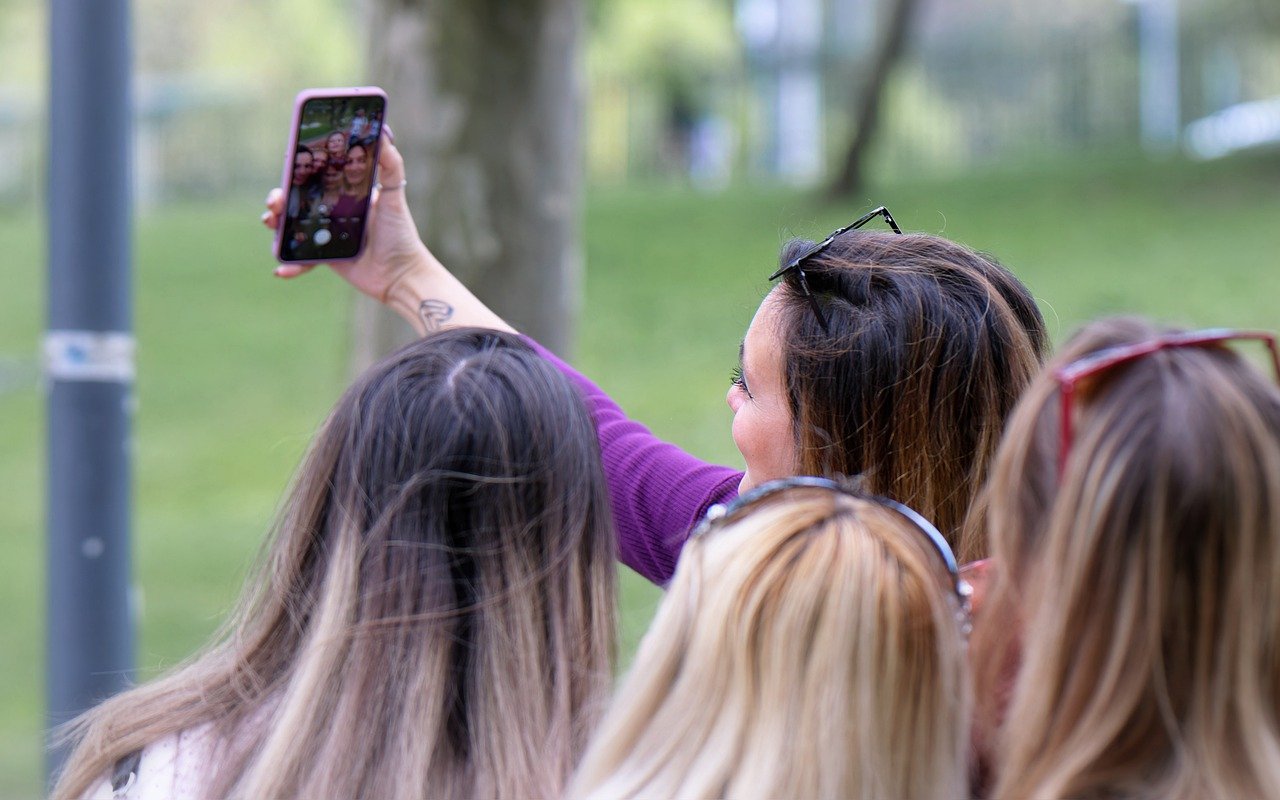
Body Language Cues
Understanding is essential for assessing a person's intent in potentially dangerous situations. When you’re out and about, your ability to read these cues can be the difference between a safe encounter and a dangerous confrontation. Think of body language as the silent language that speaks volumes without uttering a single word. It’s like a dance of gestures, expressions, and movements that can reveal someone’s true feelings, even when they’re trying to mask them.
For instance, if someone approaches you with a tense posture, their shoulders hunched and fists clenched, this could indicate aggression or hostility. Similarly, if you notice someone invading your personal space—stepping closer than what feels comfortable—this is a clear signal that they may not have good intentions. It’s important to trust your instincts in these moments. If something feels off, it probably is.
Here are some key body language cues to keep an eye on:
- Facial Expressions: A furrowed brow or a sneer can indicate anger or frustration. Conversely, a relaxed face usually signifies calmness.
- Eye Contact: Intense, unbroken eye contact can be a sign of aggression, while avoidance might suggest discomfort or fear.
- Hand Movements: Quick, erratic movements can suggest agitation, whereas open palms generally indicate a non-threatening demeanor.
Recognizing these cues can empower you to make better decisions when faced with potential threats. For example, if you see someone exhibiting aggressive body language, it might be wise to create distance or seek help. On the other hand, if someone seems nervous or uncertain, it could be an opportunity to de-escalate the situation with calm communication.
In addition to these cues, be aware of how your own body language is perceived. Standing tall with an open stance can project confidence, while crossing your arms may signal defensiveness. Remember, the way you carry yourself can either invite aggression or deter it. So, the next time you're out, take a moment to observe not just what people say, but how they say it through their body language. It’s an invaluable skill that can enhance your personal safety.
- What should I do if I notice aggressive body language?
If you notice aggressive body language, it’s best to remain calm and try to distance yourself from the individual. Avoid confrontation and seek help if necessary. - Can body language be misinterpreted?
Yes, body language can sometimes be misinterpreted. It’s essential to consider the context of the situation and other verbal cues before jumping to conclusions. - How can I improve my ability to read body language?
Practice observing people in various settings and pay attention to their non-verbal cues. Engaging in role-playing scenarios can also help enhance your skills.
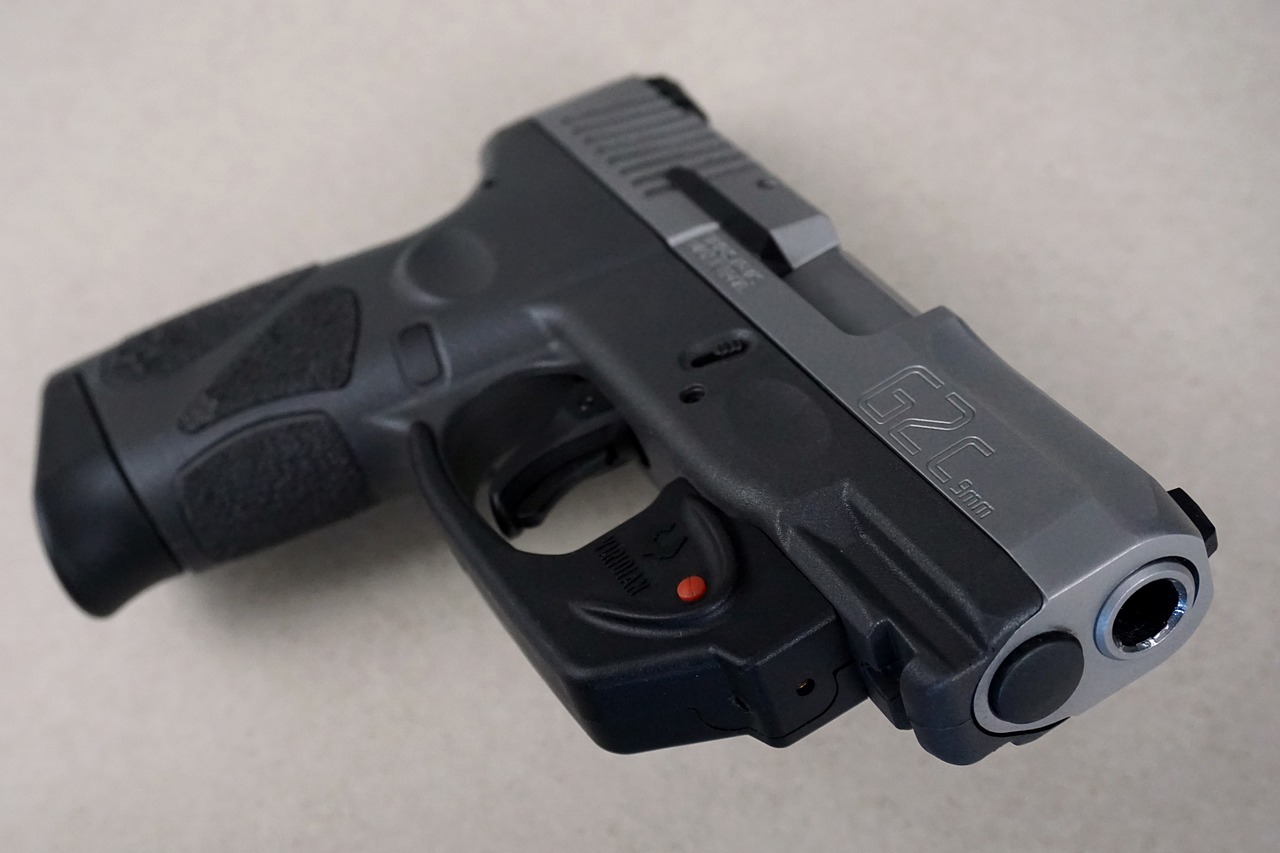
Vocal Tone and Volume
When it comes to personal safety, understanding the nuances of vocal tone and volume can be incredibly beneficial. Have you ever noticed how a person's voice can instantly change the atmosphere of a conversation? A calm, steady voice can diffuse tension, while a raised voice can escalate a situation. This is why being attuned to these vocal cues is essential in self-defense contexts.
Imagine walking down a dimly lit street and encountering someone who seems off. Their voice might carry a certain sharpness or edge that sends alarm bells ringing in your mind. This is your body’s natural instinct kicking in, urging you to assess the situation critically. In this moment, recognizing the emotional state conveyed through vocal tone can be your first line of defense.
Here are some key indicators to listen for when assessing vocal tone and volume:
- Pitch: A higher pitch can indicate stress or aggression, while a lower pitch often suggests calmness.
- Volume: Shouting or a loud voice can signify anger or a threat, while a quieter tone may suggest a more controlled demeanor.
- Speed: Rapid speech can indicate agitation, whereas slower speech may convey thoughtfulness or calm.
By tuning into these vocal signals, you can gain valuable insights into a person's intent. If someone approaches you with a loud, aggressive tone, it’s a clear warning sign that you may need to prepare for a confrontation. On the other hand, if someone speaks softly yet assertively, they might be trying to communicate rather than escalate.
Moreover, responding appropriately to vocal cues can also play a crucial role in de-escalating a potentially dangerous situation. For instance, if you find yourself confronted by an aggressive individual, adopting a calm and steady voice can help to lower the tension. You might say something like, “I don’t want any trouble; let’s just talk this out.” This approach not only shows that you are not a threat but also encourages the other person to mirror your calmness.
In conclusion, being aware of vocal tone and volume is a powerful tool in your self-defense arsenal. By honing your ability to read these cues, you can better navigate confrontational situations and enhance your personal safety. Remember, sometimes the most effective defense is not physical but rather a skillful use of communication that can defuse a potentially explosive encounter.
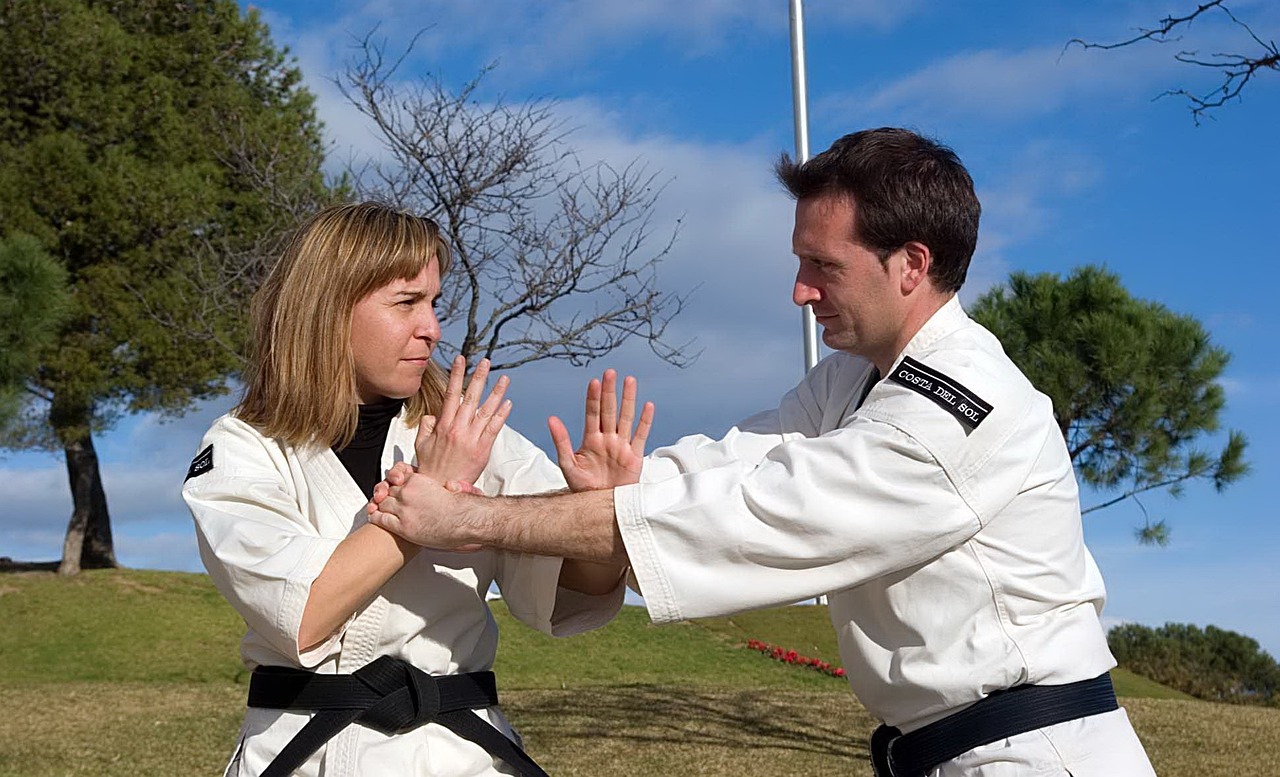
Basic Defensive Techniques
When it comes to self-defense, mastering can be your best line of defense. These techniques empower you to react effectively in threatening situations and can often mean the difference between escape and injury. Imagine being in a position where you feel cornered; having a few reliable moves in your arsenal can boost your confidence and enhance your chances of getting out safely. So, let’s dive into some fundamental techniques that can help you defend yourself with poise.
One of the most effective techniques is the palming strike. This move involves using the heel of your palm to strike an attacker's nose or chin. It’s not only simple but also incredibly powerful. The beauty of the palming strike lies in its accessibility; you can execute it quickly and with minimal risk of injuring your own hand. Just think of it as a swift way to create space between you and your aggressor, allowing you to escape to safety.
Another essential technique is the elbow strike. When an assailant is close, using your elbow can be devastating. Targeting sensitive areas such as the jaw or ribs can incapacitate an attacker momentarily. The elbow strike is particularly effective because it utilizes your body’s natural strength and requires little finesse. You don’t need to be a martial arts expert to execute it; just a bit of awareness and practice can go a long way!
Now, let’s talk about kicking techniques. A well-placed kick can be a game-changer. Focus on targeting vulnerable areas like the knee or groin. A swift kick to the knee can destabilize your attacker, giving you the opportunity to escape. Remember, the goal isn’t necessarily to fight back but to create an opening for your escape. Kicking can be an excellent way to achieve this, especially if you maintain your balance and aim for precision.
It’s also crucial to understand the concept of defensive positioning. Keeping your hands up and your body angled can make you a harder target to hit. Think of it like a shield; your arms can protect your vital areas while you look for an opportunity to escape. Practicing this stance can help you feel more composed in a tense situation, allowing you to think clearly and react appropriately.
Lastly, let’s not forget about the importance of vocalization. While it may seem minor, yelling or making loud noises can draw attention to your situation, potentially deterring an attacker. This technique is particularly effective in crowded areas where help is nearby. Don’t underestimate the power of your voice; it can be a vital tool in your self-defense arsenal.
In conclusion, mastering these basic defensive techniques can significantly enhance your personal safety. Remember, the aim is to escape, not to engage in prolonged conflict. Practice these techniques regularly, and they will become second nature when you need them the most. Always stay aware of your surroundings and trust your instincts; they are your best allies in a crisis.

Using Everyday Objects as Weapons
When it comes to self-defense, creativity and resourcefulness can be your best allies. You don’t always need to carry a personal weapon to protect yourself. In fact, many everyday objects can be transformed into effective self-defense tools when the situation demands it. Imagine walking down the street and feeling uneasy; instead of panicking, you can look around and utilize items that are already in your possession. This not only boosts your confidence but also enhances your ability to respond to potential threats.
Let's dive into some common objects that can serve as powerful allies in a crisis:
- Keys: A simple key can be more than just a tool to unlock your door. By holding your keys between your fingers, you can create a makeshift weapon that can deliver a painful jab to an assailant. This technique can be particularly effective if you aim for sensitive areas like the eyes or throat.
- Pens: Similar to keys, pens can be used to fend off an attacker. A sturdy pen can be thrust into an attacker's body, providing you with a momentary advantage to escape. It’s lightweight, easy to carry, and can be a lifesaver in a pinch.
But it doesn’t stop there. Other common items can also be utilized for self-defense:
- Umbrellas: Not only do they keep you dry, but a sturdy umbrella can be wielded as a shield or a striking tool. You can use the tip to jab at an attacker or the handle to create distance.
- Personal Alarms: A personal alarm can be a game-changer. These small devices emit a loud sound that can attract attention and scare off an attacker. Carrying one in your bag or on your keychain can provide an extra layer of safety.
- Whistles: Like personal alarms, whistles can alert others to your situation. They are compact, easy to carry, and can be heard from a distance, making them effective in drawing attention.
By being aware of your environment and recognizing the potential of everyday items, you can turn the mundane into a powerful self-defense strategy. The key is to remain calm and think quickly, transforming your surroundings into a protective barrier.
In conclusion, the ability to use everyday objects as weapons not only empowers you but also instills a sense of confidence in your ability to handle unexpected situations. Remember, it’s not about having the most sophisticated tools; it’s about being prepared and knowing how to utilize what you have at your disposal.
Q1: Can I really use everyday objects for self-defense?
A1: Absolutely! Everyday objects like keys, pens, and even umbrellas can be effective self-defense tools when used correctly. The key is to stay calm and think creatively in a tense situation.
Q2: Are there legal implications for using everyday objects as weapons?
A2: The legality of using everyday objects for self-defense varies by location. It's important to understand the laws in your area regarding self-defense and the use of force.
Q3: How can I practice using these objects for self-defense?
A3: You can practice by simulating scenarios with a friend or instructor. Focus on how to wield the object effectively while maintaining awareness of your surroundings.
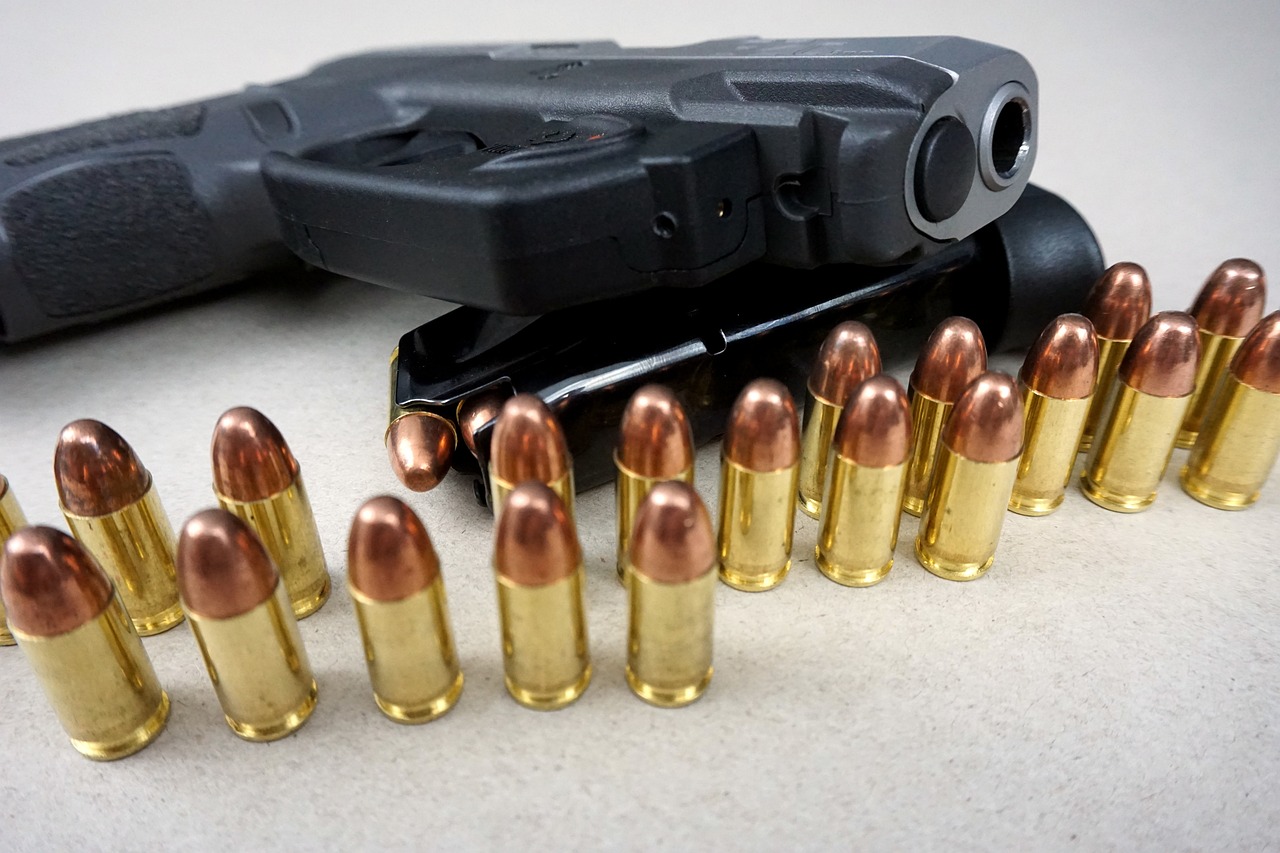
Keys and Pens
When it comes to self-defense, the idea of using everyday items might seem unconventional, but in reality, objects like keys and pens can be surprisingly effective tools for personal safety. Imagine walking down a dimly lit street and sensing someone following you—a quick, instinctive reaction might be to reach for your keys. Not only are they readily available, but they can also be wielded in a way that can deter an attacker. By holding your keys between your fingers, you create a makeshift weapon that can inflict pain if necessary. This simple adjustment transforms a mundane object into a powerful ally in a moment of crisis.
Similarly, a pen can serve as a practical self-defense tool. Many pens are designed with sturdy materials, making them not just writing instruments but also potential weapons. If you find yourself in a threatening situation, a pen can be used to jab at sensitive areas such as the eyes or throat. The key is to maintain a firm grip and aim for vulnerable spots. The element of surprise can be your greatest advantage; most attackers do not expect an unarmed person to fight back.
Here’s a quick comparison of how you can use these everyday items effectively:
| Item | Usage | Effectiveness |
|---|---|---|
| Keys | Hold between fingers for jabbing | High |
| Pen | Jab at sensitive areas | Moderate to High |
It's essential to remember that the effectiveness of these items largely depends on your awareness and confidence. Practicing how to use them in a safe environment can prepare you for the unexpected. Furthermore, carrying these items in a way that allows for quick access can make all the difference. For example, having your keys in hand as you approach your car can enhance your readiness in case a threat arises.
Overall, incorporating items like keys and pens into your self-defense strategy not only empowers you but also instills a sense of security. The next time you step out, consider the potential of the objects you carry. They might just provide the upper hand you need in a critical moment.
- Can I really use my keys and pens for self-defense? Yes, both can be effective tools when used correctly, especially in vulnerable situations.
- What should I do if I feel threatened? Trust your instincts, and if you feel unsafe, use your keys or pen as a defensive tool while seeking a safe exit.
- Are there other everyday items I can use for self-defense? Absolutely! Items like umbrellas, bags, and even your phone can be used creatively for defense.
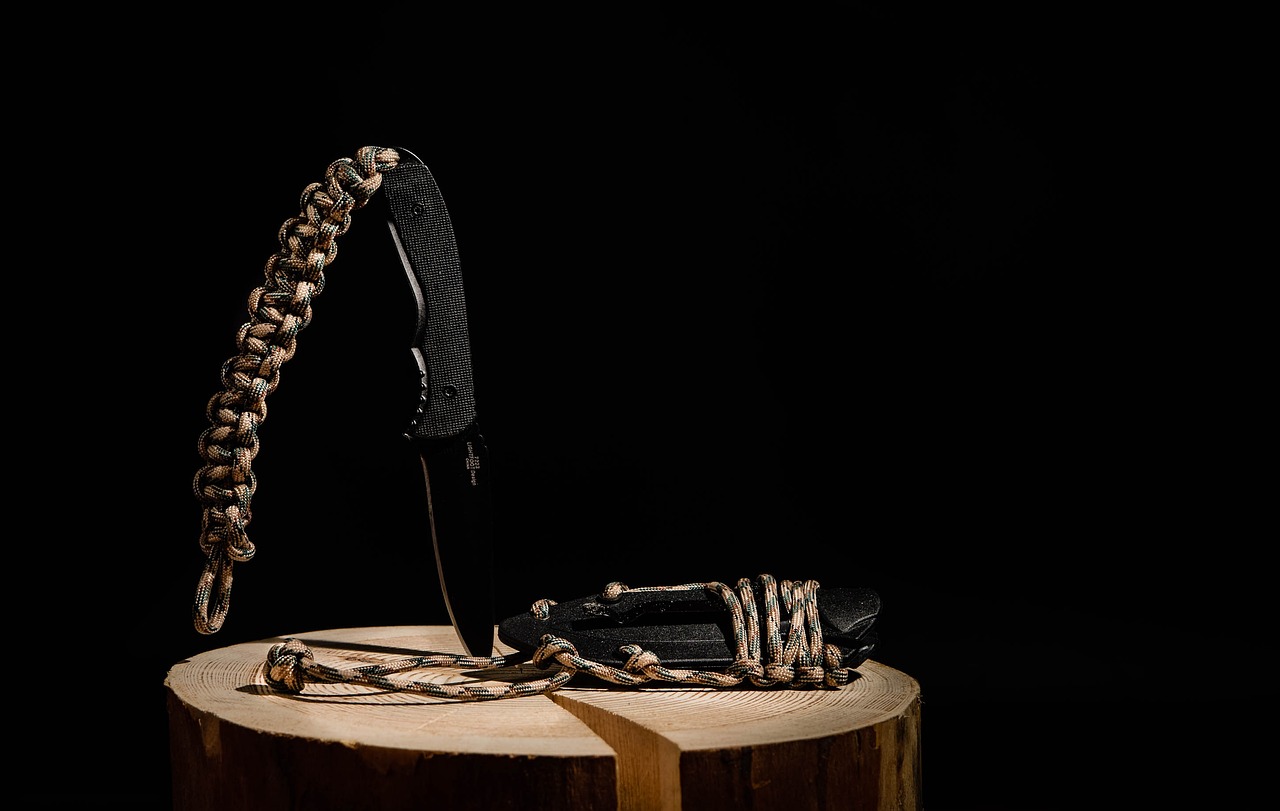
Personal Alarms and Whistles
When it comes to personal safety, personal alarms and whistles are often overlooked yet incredibly effective tools that can make a significant difference in a precarious situation. Imagine walking down a dimly lit street and suddenly feeling uneasy; having a personal alarm at your fingertips can provide an instant sense of security. These compact devices are designed to emit a loud sound, typically around 120 decibels, which can be enough to startle an attacker and draw attention to your situation. In fact, the sheer volume can deter many potential threats simply by alerting those nearby that something is amiss.
Using a personal alarm is straightforward: just pull the pin or press a button, and the piercing sound will fill the air. This action not only signals for help but also can disrupt the focus of an aggressor, giving you precious seconds to escape. Moreover, many personal alarms are equipped with features like built-in LED lights, which can be useful if you need to navigate in the dark or signal for assistance visually. It's like having a tiny guardian angel in your pocket!
Whistles, on the other hand, are equally effective and can be a great addition to your self-defense toolkit. They are lightweight, easy to carry, and can produce a sound that travels far, making them ideal for alerting others in emergency situations. Just a quick blow can send a clear message that you need help. Additionally, whistles don’t require batteries, making them a reliable option that won’t fail you when you need it most.
Consider the following advantages of using personal alarms and whistles:
- Immediate Attention: The loud sound can attract the attention of passersby or nearby individuals, increasing your chances of receiving help.
- Portable and Convenient: They can easily fit in your pocket, purse, or on your keychain, ensuring you have them on hand whenever you need them.
- Non-Aggressive Deterrent: Unlike physical self-defense, using an alarm or whistle is a non-confrontational way to handle a potentially dangerous situation.
Incorporating personal alarms and whistles into your daily routine is a smart and proactive step towards enhancing your safety. Whether you're heading out for a jog, walking home late at night, or simply exploring a new area, having these tools at your disposal can provide peace of mind. Remember, being prepared is half the battle. So, why not invest in your safety and carry a personal alarm or whistle? After all, it's better to have it and not need it than to need it and not have it!
Q: How loud is a personal alarm?
A: Most personal alarms emit sounds around 120 decibels, which is comparable to a jet engine at takeoff, making it very effective in attracting attention.
Q: Are personal alarms reusable?
A: Yes, personal alarms can be reused multiple times. Just remember to replace any batteries if your alarm is battery-operated.
Q: Can I use a whistle for self-defense?
A: Absolutely! A whistle can be a great self-defense tool as it can attract attention and signal for help without engaging in physical confrontation.
Q: Where can I buy personal alarms and whistles?
A: You can find personal alarms and whistles at sporting goods stores, online retailers, and even in some convenience stores.
Frequently Asked Questions
- What is situational awareness and why is it important?
Situational awareness is the ability to perceive your environment and understand the potential threats around you. It’s like having a sixth sense that alerts you to danger before it becomes a problem. By being aware of your surroundings, you can identify suspicious behavior and avoid risky situations, ultimately enhancing your personal safety.
- How can I use de-escalation techniques in a tense situation?
De-escalation techniques involve using calm verbal communication and positive body language to diffuse a potentially violent situation. Think of it as talking someone down from a ledge. By maintaining a calm demeanor, using a soft tone, and showing empathy, you can often prevent a confrontation from escalating into violence.
- What are some common signs of aggressive behavior?
Recognizing aggressive behavior early can be crucial. Look for signs like clenched fists, intense eye contact, or a person invading your personal space. These indicators can signal that someone is becoming hostile, allowing you to take action before things get out of hand.
- How can body language help me assess a person's intent?
Body language can be a window into someone's feelings. For instance, crossed arms might indicate defensiveness, while fidgeting could suggest anxiety. By learning to interpret these cues, you can better gauge whether someone poses a threat, helping you stay one step ahead.
- What are some basic defensive techniques I should know?
Mastering a few basic defensive techniques can significantly boost your confidence and safety. Techniques like palm strikes, knee strikes, and escaping holds can empower you to defend yourself effectively. Remember, the goal is to create an opportunity to escape rather than engage in a prolonged confrontation.
- Can everyday objects really be used for self-defense?
Absolutely! Everyday objects like keys, pens, or even a sturdy umbrella can serve as effective self-defense tools. When used correctly, these items can help you fend off an attacker and give you a chance to escape. It’s all about being resourceful and thinking on your feet!
- How do personal alarms and whistles enhance my safety?
Personal alarms and whistles are great tools for attracting attention in an emergency. They can startle an attacker and alert passersby that you need help. Carrying one of these devices can provide peace of mind, knowing you have a way to signal for assistance if needed.



















